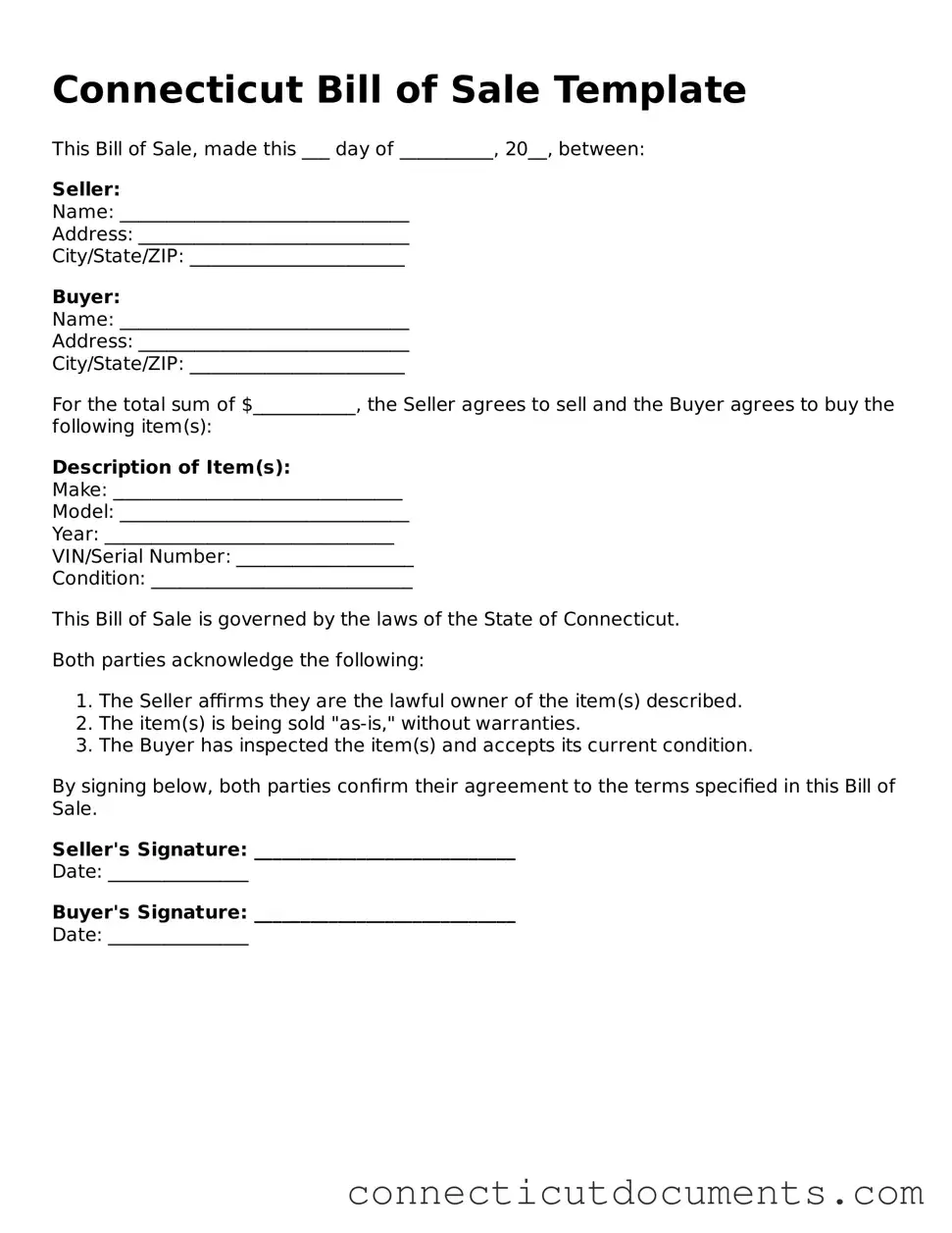What is a Connecticut Bill of Sale?
A Connecticut Bill of Sale is a legal document that records the transfer of ownership of personal property from one person to another. It serves as proof of the transaction and outlines details like the buyer and seller's information, the item being sold, and the sale price.
Do I need a Bill of Sale for every transaction?
While not every transaction requires a Bill of Sale, it is highly recommended for significant purchases. For items like vehicles, boats, or expensive equipment, having this document can protect both the buyer and seller in case of disputes.
What information should be included in a Bill of Sale?
A proper Bill of Sale should include the names and addresses of both the buyer and seller, a description of the item being sold, the sale price, the date of the transaction, and any warranties or conditions of the sale. This information helps clarify the terms of the sale.
Is a Bill of Sale required for selling a vehicle in Connecticut?
Yes, when selling a vehicle in Connecticut, a Bill of Sale is required. It helps establish proof of ownership transfer. Additionally, the seller must provide the buyer with the vehicle's title, which must be properly signed over.
Can I create my own Bill of Sale?
Yes, you can create your own Bill of Sale. Just make sure it includes all necessary information. Many templates are available online, which can help guide you in creating a document that meets your needs.
Do I need to notarize the Bill of Sale?
Notarization is not required for a Bill of Sale in Connecticut, but it can add an extra layer of security. Having the document notarized can help verify the identities of the parties involved and the authenticity of the signatures.
How long should I keep a Bill of Sale?
It’s a good idea to keep a copy of the Bill of Sale for at least three years after the transaction. This can be useful for tax purposes or in case any disputes arise regarding the sale.
What if there are issues after the sale?
If issues arise after the sale, the Bill of Sale can serve as a crucial piece of evidence. It outlines the terms of the agreement and can help resolve disputes over ownership or condition of the item sold.
